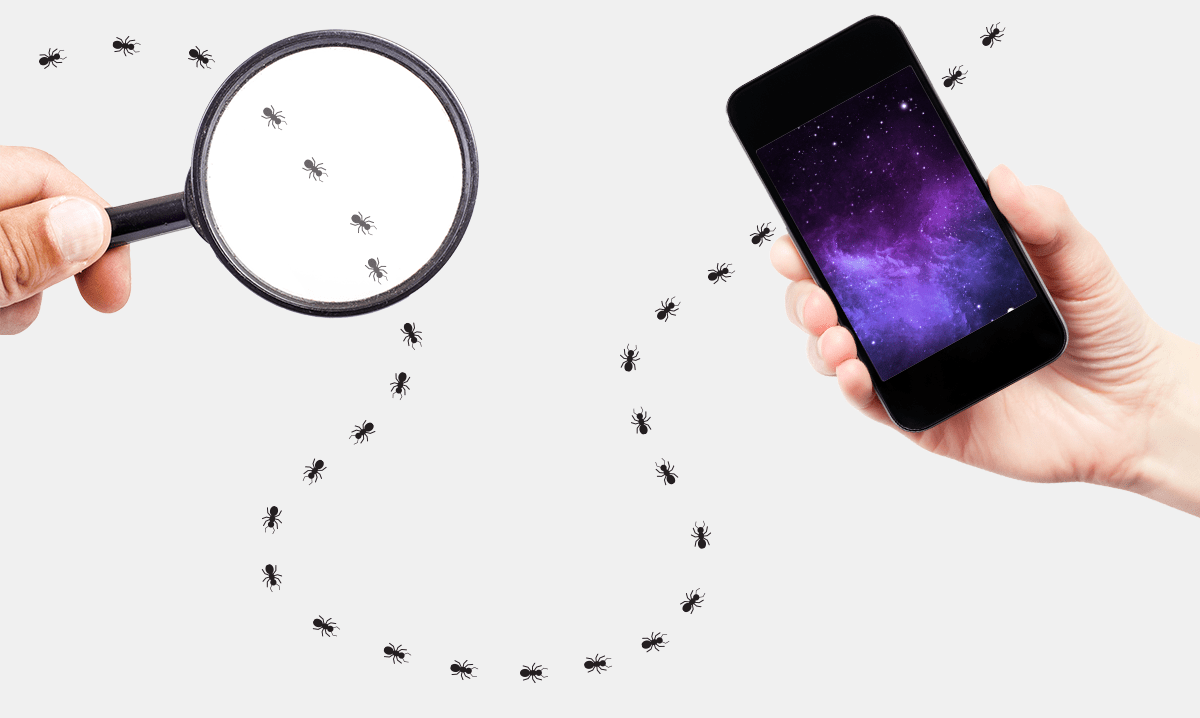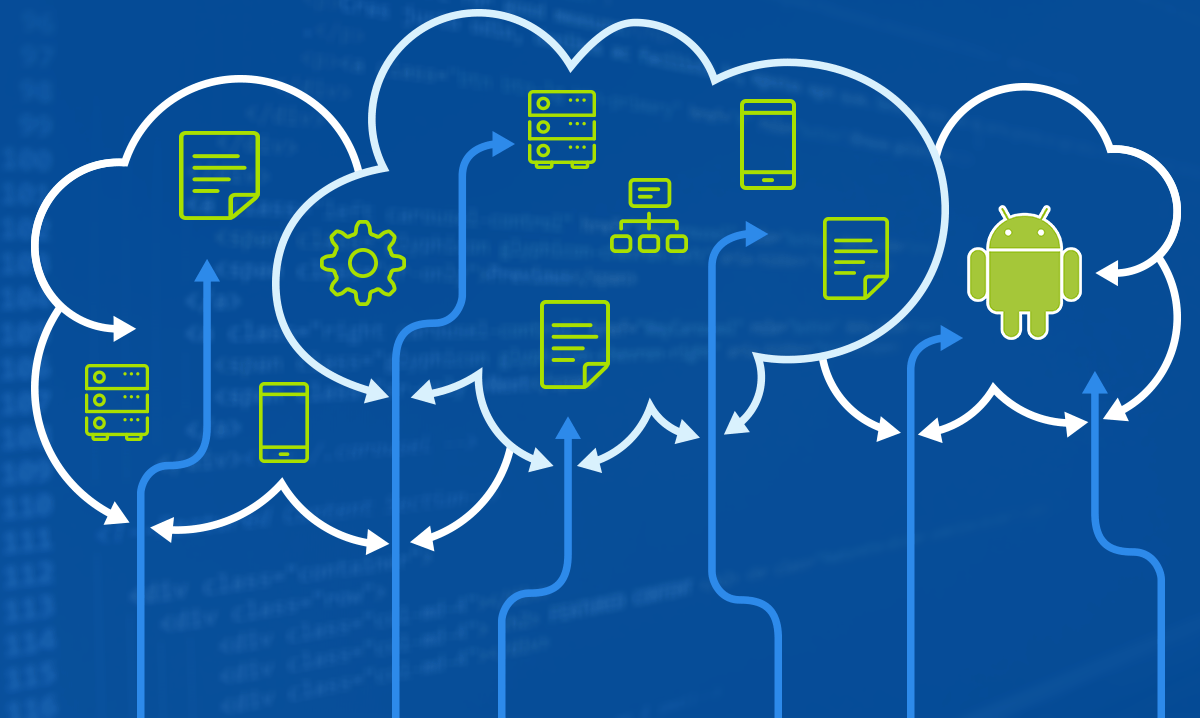
Android Testing with Espresso 2 and Dagger 2 – mocking, long running operations.
- Processes, standards and quality
- Technologies
- Others
When I started with Android development it was the time Google decided to switch to Android Studio based on a wonderful IDEA. The switch was also affecting the build tools.
Ancient Ant was being replaced by Gradle aka ‘New Build System’. By the way, it is still called that (march 2015 🙂 ).
While the core Android version 4 development platform and SDK were quite stable, testing support was a mess. Strangely named classes contained within strangely named packages. Breaking changes introduced by evolving Gradle plugins, undocumented default directory names and locations used by build by convention system, outdated documentation and tutorials all over the Internet. I remember trying Robolectric for classic JVM unit testing and Robotium for on-device Instrumentation tests. Robolectric was already behind API levels and trying to use it with the current messy build tools, not to mention with Dependency Injection libs like RoboGuice, was very painful. Robotium was fine but quite slow. It was also not very expressive in terms of test code and error messages. And oh, did I mention that everything was based on jUnit 3 (yes 3!)? Ugly, ugly. ActivityInstrumentationTestCase2 was your friend. Unfortunately, I never met ActivityInstrumentationTestCase1 or whatever it was called. It would have been fun.
That is how I met Espresso – developed by Google, used by Google. It was quite new, freshly released. Unfortunately, it seemed like someone decided to expose it to public too early. I think that it was ripped from some existing project, you could almost see the bleeding veins. And as you can guess using it was a mess. Were it not for invaluable legendary Jake Wharton and his Double Espresso project I would probably quickly drop using Espresso. Espresso, however, looked very promising. Nice, fluid API working on-device with Instrumentation. Very good error messages. And speed. Yes. Very quick.
Fortunately, Android testing is constantly evolving. March 2015, I can see the light at the end of testing tunnel. Google recently announced support for classic JVM unit tests: http://tools.android.com/tech-docs/unit-testing-support and Espresso version 2 was released. Moreover, everything moved to jUnit 4 world, which opened new possibilities.
In this post I would like to focus on Espresso2 with Dagger2, especially on usage of Espresso’s IdlingResource and mocking Dagger2 dependencies in tests. Why these topics? Well, to quote Espresso documentation „Leave your waits, syncs, sleeps, and polls behind and let Espresso gracefully manipulate and assert on the application UI when it is at rest” and „The centrepiece of Espresso is its ability to seamlessly synchronize all test operations with the application under test. By default, Espresso waits for UI events in the current message queue to process and default AsyncTasks to complete before it moves on to the next test operation. This should address the majority of application/test synchronization in your application”. Unfortunately, this is not completely true.
Espresso tries to do its best in the matter of automatic synchronization with Main Thread. It usually works with the emphasis on word 'usually’ and if you are reading this article then you are probably encountering these 'rare’ cases when it doesn’t. Of course, there is an approach suggested in Espresso documentation: „In such cases, the first thing we suggest is that you don your testability hat and ask whether the user of non-standard background operations is warranted. In some cases, it may have happened due to poor understanding of Android and the application could benefit from refactoring (for example, by converting custom creation of threads to AsyncTasks)”. So… use AsyncTasks? No, thank you very much. We can all agree that AsyncTasks should be avoided for network or other long running operations. I don’t want to detail why but there are plenty of other articles on that matter. Nowadays, you are probably using Retrofit with rxJava Observables for networking. In that case Espresso fails to synchronize waiting. But there is a way to instruct Espresso to make it know when your application is idle. Enter IdlingResource.
And Dagger2?… because it is great, fun, clean and I read somewhere that you can’t inject mocks when testing with Dagger2. You can, but I guess that this will change in the future as my solution is not the cleanest or simplest one.
Ok, let’s concisely describe our test application and test cases. We have 3 Activities: FirstActivity, SecondActivity and ThirdActivity.
First activity has two buttons. One simulates network call, which lasts 10 seconds and after it has successfully finished it navigates application to SecondActivity, which has label „Second Activity”. Typical login use case.
The second button just navigates to ThirdActivity.
SecondActivity has just one button and a label. Pressing the button simulates long running operation (computation or network, doesn’t matter) and changes label to „Running…”. When operation finishes label changes to „SUCCESS”. This may be your typical refresh.
ThirdActivity uses real network call to obtain Jake’s GitHub repo names and prints the first one it finds.
So what test cases do we have and would like to test?
- User provides login details (in our case just a button click) and clicks „Login” button. Network call is being made and if login is successful new Activity is displayed and it contains some well-known text. We want to verify if this well-known text is present.
- User runs some computation or refresh on Activity and after it finishes successfully the same Activity is somehow changed. We want to verify if this change occurred.
- Typical usage of service that does real networking. We want to mock network call so our test is quick, repeatable and tests our business logic.
Let’s see some bits of our Gradle config.
Add test dependencies for Espresso:
androidTestCompile 'com.android.support.test.espresso:espresso-core:2.0'
androidTestCompile 'com.android.support.test:testing-support-lib:0.1'
Don’t forget to use new test runner:
android {
compileSdkVersion 21
buildToolsVersion "21.1.2";
compileOptions {
sourceCompatibility JavaVersion.VERSION_1_8
targetCompatibility JavaVersion.VERSION_1_8
}
defaultConfig {
testInstrumentationRunner "android.support.test.runner.AndroidJUnitRunner";
And we are ready to dig into our test cases.
- Login use case.
- Long running operation/refresh use case.
- Mocking real network call use case.
When the button1 on FirstActivity is clicked:
button1OnFirstActivity.setOnClickListener(v -> {
button1OnFirstActivity.setEnabled(false);
subscription = Observable.empty()
.subscribeOn(Schedulers.newThread())
.observeOn(AndroidSchedulers.mainThread())
.delay(10, TimeUnit.SECONDS)
.subscribe(launchSecondActivity());
});we wait 10 seconds and launch SecondActivity.
Our test case in Espresso (FirstActivityEspressoTest.java) could look like this:
// Click on button that simulates long network call and after success goes to SecondActivity
onView(withId(R.id.button1OnFirstActivity)).perform(click());
// Validate label on SecondActivity
onView(withText("Second Activity")).check(ViewAssertions.matches(isDisplayed()));You can try to run this test but you will see it fails. Espresso will click on a button1 and then immediately try to validate presence of „Second Activity” text. This text will however be displayed after 10 seconds on new Activity. Synchronization does not work because we are not using AsyncTasks. You can add Thread.sleep(12000) between click and validation lines but it defeats the whole purpose and is inefficient and can lead to false test failures. This is when we can use IdlingResource. Usage of IdlingResource requires certain design of our application. In other words our application needs to cooperate with its environment, somehow inform interested observers about its state. We would like to minimise impact of our tests on application, ideally to never have our application know about any test dependencies, classes, interfaces.
My solution is to provide stream (Observable) of Activity events like Created or Destroyed from global Application object. It minimises changes in application and so can be easily introduced into existing code base. Test case can then subscribe to this Observable and provide Espresso with all the data required to know when application is idle and displaying SecondActivity. All we need to do is to add internal class to our custom Application class:
private static class ActivityEventProducer implements ActivityLifecycleCallbacks, Observable.OnSubscribe{ private ArrayBlockingQueue activityEvents = new ArrayBlockingQueue<>(256, false); private boolean anyOneSubscribed; @Override public void onActivityCreated(Activity activity, Bundle savedInstanceState) { if(!anyOneSubscribed) { return; } ActivityEvent activityEvent = new ActivityEvent(); activityEvent.setActivityClass(activity.getClass()); activityEvent.setEventKind(ActivityEventKind.CREATED); activityEvents.add(activityEvent); } @Override public void onActivityStarted(Activity activity) { if(!anyOneSubscribed) { return; } } @Override public void onActivityResumed(Activity activity) { if(!anyOneSubscribed) { return; } } @Override public void onActivityPaused(Activity activity) { if(!anyOneSubscribed) { return; } } @Override public void onActivityStopped(Activity activity) { if(!anyOneSubscribed) { return; } } @Override public void onActivitySaveInstanceState(Activity activity, Bundle outState) { if(!anyOneSubscribed) { return; } } @Override public void onActivityDestroyed(Activity activity) { if(!anyOneSubscribed) { return; } ActivityEvent activityEvent = new ActivityEvent(); activityEvent.setActivityClass(activity.getClass()); activityEvent.setEventKind(ActivityEventKind.DESTROYED); activityEvents.add(activityEvent); } @Override public void call(Subscriber subscriber) { anyOneSubscribed = true; try { while(!subscriber.isUnsubscribed()) { ActivityEvent activityEvent = activityEvents.take(); subscriber.onNext(activityEvent); } } catch(Exception e) { subscriber.onError(e); } finally { anyOneSubscribed = false; activityEvents.clear(); } } }
This class combines two aspects. Firstly, it is ActivityLifecycleCallbacks implementation so when registered will receive lifecycle events from each Activity. Secondly, it is rxJava OnSubscribe implementation and will be called when someone subscribes to it. The code is very simple: ArrayBlockingQueue is filled with events for Activity creation or destruction and when there is at least one element in this array, subscriber will be notified. Otherwise subscriber will wait for events (array is blocking).
All we need to do in Application onCreate is to register instance of this class:
@Override
public void onCreate() {
super.onCreate();
ActivityEventProducer activityEventProducer = new ActivityEventProducer();
_activityEventStream = Observable.create(activityEventProducer);
registerActivityLifecycleCallbacks(activityEventProducer);
You don’t have to touch any Activities or change any other design.
Our test case needs to change to use this stream with IdlingResource. Remember, we need to wait for SecondActivity creation:
@Test
public void firstActivityTest() throws InterruptedException {
secondActivityCreatedIdlingResource = new SecondActivityCreatedIdlingResource();
GlobalApplication.activityEventStream().
subscribeOn(Schedulers.newThread())
.observeOn(AndroidSchedulers.mainThread())
.subscribe(secondActivityCreatedIdlingResource);
// Click on a button that simulates long network call and after success goes to SecondActivity
onView(withId(R.id.button1OnFirstActivity)).perform(click());
// Wait until SecondActivity is created
registerIdlingResources(secondActivityCreatedIdlingResource);
// Validate label on SecondActivity
onView(withText("Second Activity")).check(ViewAssertions.matches(isDisplayed()));
}
The crucial line is registerIdlingResources(secondActivityCreatedIdlingResource);
It instructs Espresso to synchronize on our implementation. So let’s implement it SecondActivityCreatedIdlingResource:
private static class SecondActivityCreatedIdlingResource extends Subscriberimplements IdlingResource { private volatile ResourceCallback resourceCallback; private volatile boolean secondActivityCreated; @Override public String getName() { return "SecondActivity Created"; } @Override public boolean isIdleNow() { return secondActivityCreated; } @Override public void registerIdleTransitionCallback(ResourceCallback resourceCallback) { this.resourceCallback = resourceCallback; } @Override public void onCompleted() { } @Override public void onError(Throwable e) { } @Override public void onNext(ActivityEvent activityEvent) { if(secondActivityCreated(activityEvent)) { secondActivityCreated = true; resourceCallback.onTransitionToIdle(); } } private boolean secondActivityCreated(ActivityEvent activityEvent) { return activityEvent.getActivityClass().equals(SecondActivity.class) && activityEvent.getEventKind() == ActivityEventKind.CREATED; } }
This class is both IdlingResource and Subscriber. It starts with isIdleNow returning false – so Espresso immediately waits. But when the second activity is created and we get this creation event it will report that resource is idle and Espresso will continue and hence validate.
Don’t forget to unregister everything in test teardown:
@After
public void tearDown() {
unregisterIdlingResources(secondActivityCreatedIdlingResource);
secondActivityCreatedIdlingResource.unsubscribe();
}
By the way, in the current solution there is no progress bar or any other UI indicator during login call. This is bad design and can really confuse the user. Interestingly, when I added progress bar control during login the test passes on Nexus 5 with Lollipop. It looks like Espresso correctly detects constant load on application UI events loop and synchronizes wait until SecondActivity is ready. Very cool! Unfortunately, it fails on Galaxy 4 with Android 4.4. I’m not completely sure what is going on under the hood but for the purpose of demonstration of IdlingResource I removed ProgressBar.
Secundo by the way: You can see that the test is not extending ActivityInstrumentationTestCase2. This is thanks to invaluable and legendary Jake Wharton and ActivityRule
Test now passes no matter if progress bar is present or not on both Nexus 5 and SGS4.
In our second case we are not changing Activity. When a button is clicked long running operation does its stuff and when finished some change occurs on the same Activity. We can’t use our event stream from case 1.
When a button is clicked:
button1OnSecondActivity.setOnClickListener(v -> {
button1OnSecondActivity.setEnabled(false);
textViewOpResult.setText("Running...");
service.doLongRunningOpAndReturnResult(result ->
textViewOpResult.post(
() -> textViewOpResult.setText(result)));
long running operation starts. The solution is to have service with long running operation abstracted away so Activity is not concerned with implementation details. I have deliberately used constructor for real service here, because I don’t want to obscure this case with DI.
private RealLongRunningService service = new RealLongRunningService();
public void setService(RealLongRunningService service) {If this is true we can easily decorate service during tests and setup Activity to use such decorated service. Test method is simple:
@Test
public void secondActivityTest() throws InterruptedException {
DecoratedLongRunningService decoratedLongRunningService = new DecoratedLongRunningService();
registerIdlingResources(decoratedLongRunningService);
secondActivity.get().setService(decoratedLongRunningService);
onView(withId(R.id.button1OnSecondActivity)).perform(click());
onView(withText("SUCCESS")).check(ViewAssertions.matches(isDisplayed()));
}
DecoratedLongRunningService decorates real long running service and at the same time is IdlingResource. This time we can register idling resource even before any core test methods because it starts in Idle state. This can be seen in DecoratedLongRunningService class:
private static class DecoratedLongRunningService extends RealLongRunningService implements IdlingResource {
private ResourceCallback resourceCallback;
private volatile boolean isRunning;
@Override
public void doLongRunningOpAndReturnResult(Action1 action) {
isRunning = true;
super.doLongRunningOpAndReturnResult(new Action1() {
@Override
public void call(String realResult) {
action.call(realResult);
isRunning = false;
resourceCallback.onTransitionToIdle();
}
});
}
@Override
public String getName() {
return "Long Running Service";
}
@Override
public boolean isIdleNow() {
return !isRunning;
}
@Override
public void registerIdleTransitionCallback(ResourceCallback resourceCallback) {
this.resourceCallback = resourceCallback;
}
}
It is just normal decorator – calls real service but can do some additional operations before and after. In our case, it changes idle state and informs Espresso about that change.
Again, the test passes and our production code does not know about any IdlingResources, Espresso or any other test related stuff.
Our ThirdActivity uses Retrofit to make real network call when a button is pressed. Retrofit service however is abstracted and injected by Dagger2:
public class ThirdActivity extends Activity {
TextView textView;
@Inject
BackendContract backendContract;
@Override
protected void onCreate(Bundle savedInstanceState) {
super.onCreate(savedInstanceState);
setContentView(R.layout.activity_third);
textView = (TextView) findViewById(R.id.list);
((GlobalApplication) getApplication()).component().inject(this);
}
@Override
protected void onResume() {
super.onResume();
performBackendCall();
}
public void performBackendCall() {
backendContract.getJakesRepos().
subscribeOn(Schedulers.io()).
observeOn(AndroidSchedulers.mainThread()).
subscribe(repositories -> textView.setText(repositories.get(0).name));
}
}
Where contract is:
public interface BackendContract {
@GET("/users/jakewharton/repos")
Observable> getJakesRepos();
}
Implementation in production code is using Retrofit but it’s irrelevant to current analysis.
Dagger2 module that provides this dependency is simple:
@Module
public class RestServicesModule {
@Provides
BackendContract provideBackendService() {
return new BackendService();
}
}
and is configured and wired in Application class:
@Override
public void onCreate() {
super.onCreate();
applicationComponent = Dagger_GlobalApplication_ApplicationComponent.builder()
.restServicesModule(new RestServicesModule())
.build();
component().inject(this);
}
public ApplicationComponent component() {
return applicationComponent;
}
public void setApplicationComponent(ApplicationComponent component) {
this.applicationComponent = component;
}
@Singleton
@Component(modules = RestServicesModule.class)
public interface ApplicationComponent {
void inject(GlobalApplication application);
void inject(ThirdActivity thirdActivity);
}This is normal Dagger2 stuff.
But when testing we would like to change this implementation with our mock and configure Dagger2 to use our mock implementation, so again we won’t need any changes to Activity.
Test method builds Dagger component but uses MockRestServiceModule instead of our real production one:
@Test
public void thirdActivityTest() throws InterruptedException {
GlobalApplication.ApplicationComponent component = Dagger_GlobalApplication_ApplicationComponent.builder()
.restServicesModule(new MockRestServiceModule())
.build();
((GlobalApplication) InstrumentationRegistry.getInstrumentation().getTargetContext().getApplicationContext()).setApplicationComponent(
component);
thirdActivity.launchActivity();
onView(withId(R.id.list)).check(matches(withText("abs.io")));
}
And MockRestServiceModule creates mocked implementation of BackendContract.
public class MockRestServiceModule extends RestServicesModule {
@Override
BackendContract provideBackendService() {
return new MockBackendService();
}
}
You can easily use Mockito to create the mock or use your own class within test package.
All these 3 approaches should be sufficient to efficiently and successfully use Espresso testing for your application.
Happy testing!

